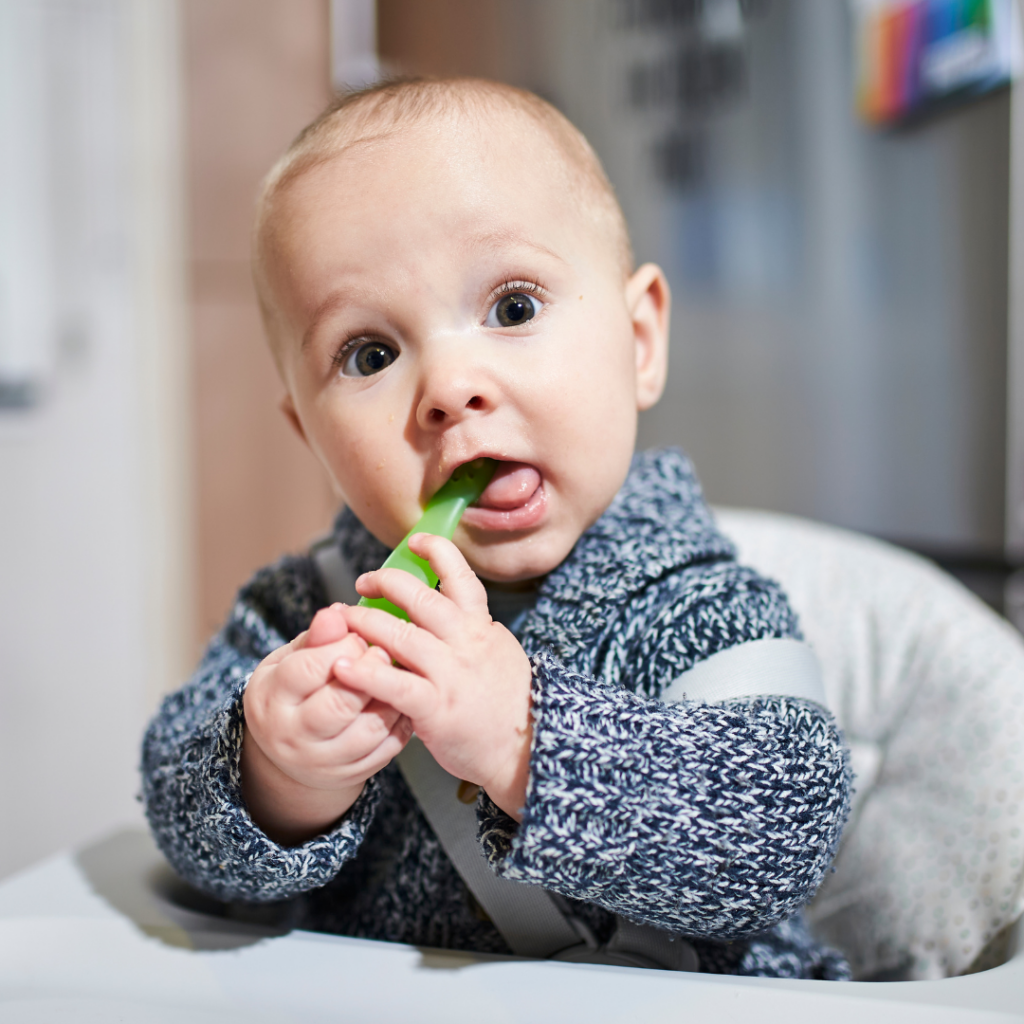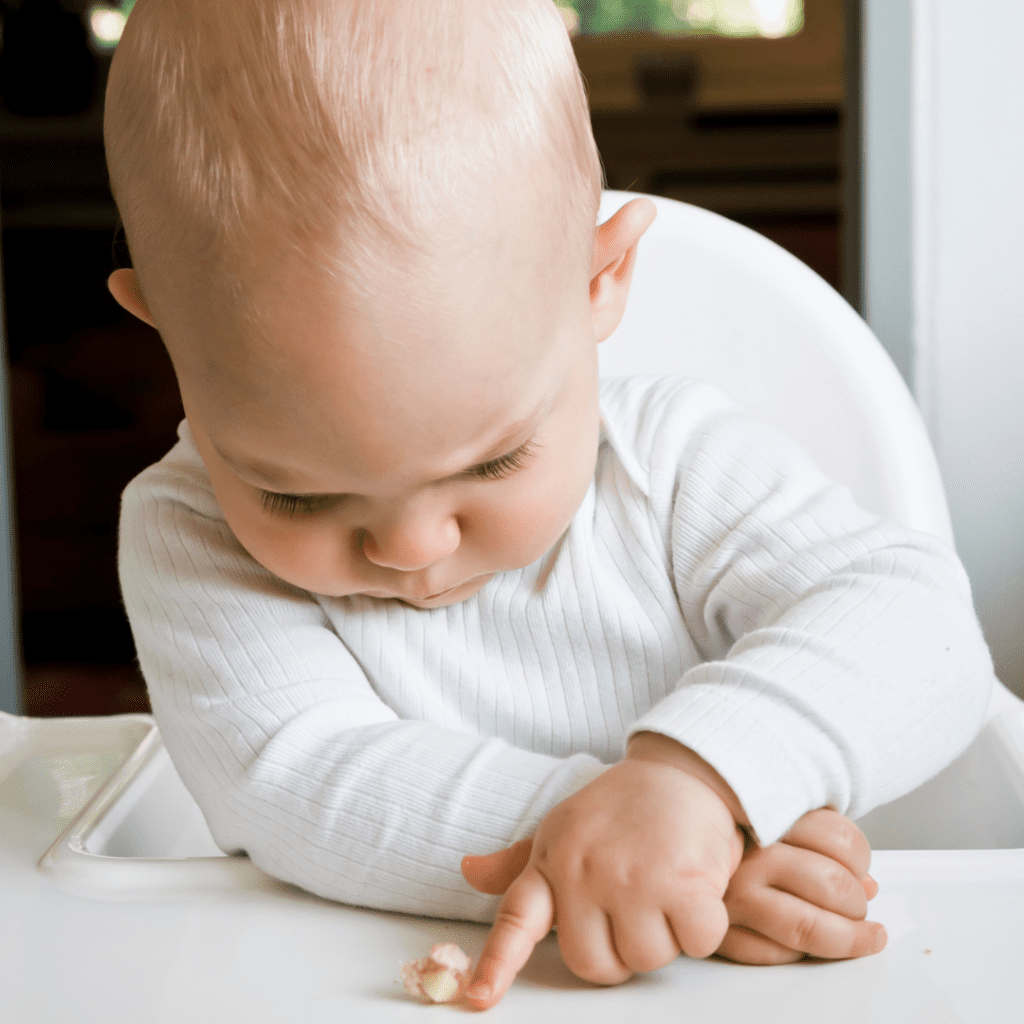Babies spitting out the food they eat is one of the many things you can add to the list of things that you may potentially worry about as a parent. It happens to almost all parents and kids at some point, and so it’s natural for thoughts to start floating around in your head, like:
- Is my baby getting enough nutrition if they spit the food back out?
- Does this mean they don’t like the food?
- Should I re-offer the food?
- Is it because they don’t know how to chew the food?
And the list goes on.
What’s more, sometimes this happens to more than just new eaters. Toddlers, who previously could (and would) eat and chew food without issue, can all of a sudden start spitting out food, leaving you feeling perplexed about what to do.
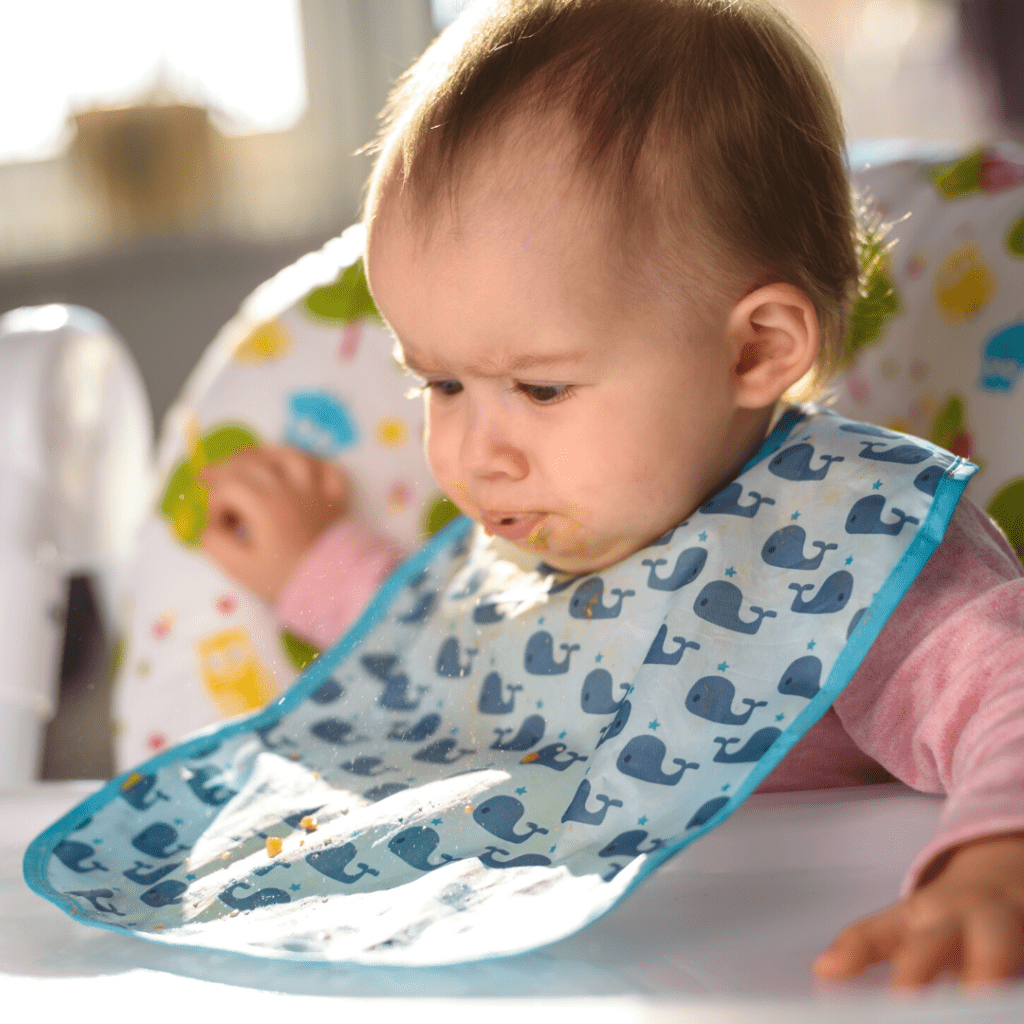
This blog post will explore all the reasons why your baby could spit out food, how to help them to learn how to chew their food, and of course, swallow it. It will dissect some of the most common feeding therapy techniques, and look at things from a behavioral, skill, and nutritional perspective. We’ll also cover when you may need to seek help for a bigger issue.
Concerned about your baby taking big bites, gagging, or learning to move from purées to finger foods? See our free workshop – Baby Led Weaning – but make it purées!
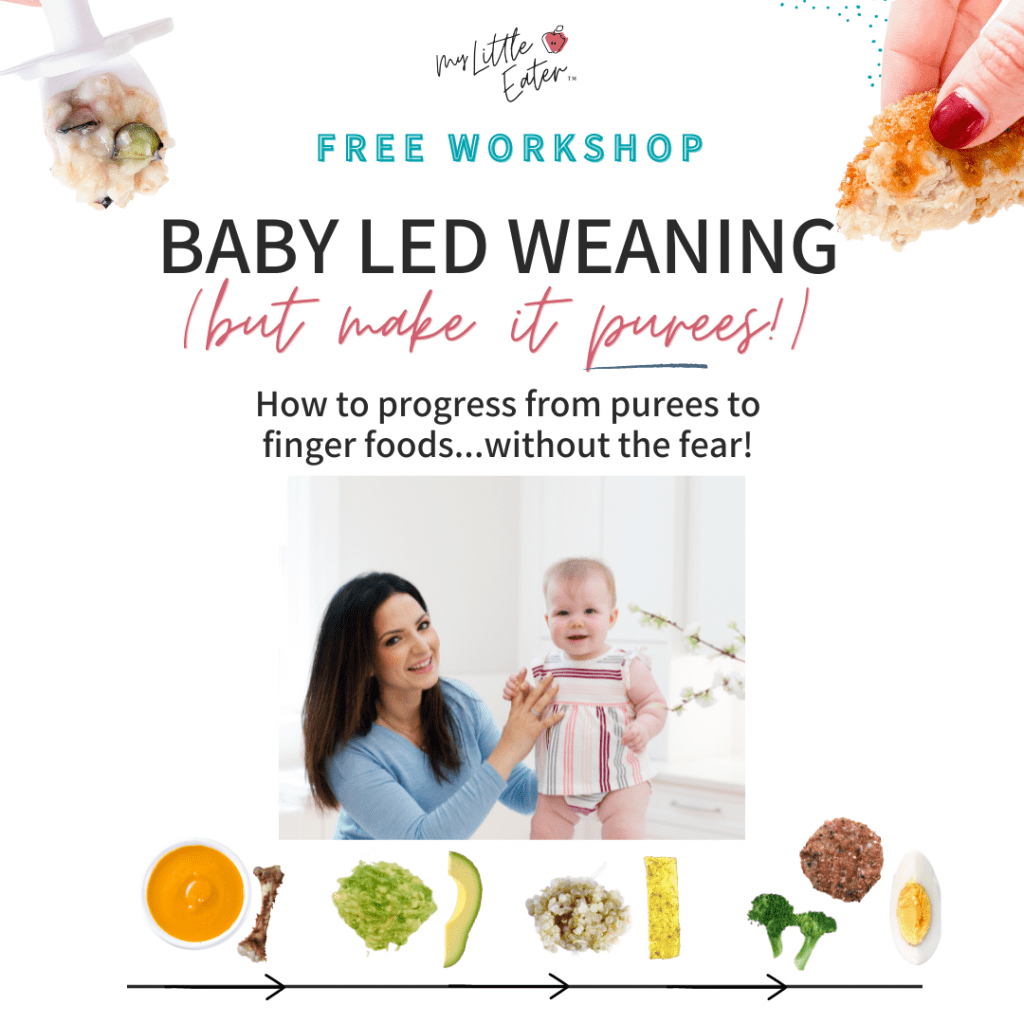
What are the common reasons why babies spit out food?
Their oral motor skills aren’t fully developed
Babies are still learning how to eat, so if your baby is spitting out food, it could be because their oral motor skills aren’t fully developed. Oral motor skills refer to the ability to coordinate the muscles and movements of the mouth, jaw, and tongue in ways that are necessary for eating and swallowing.
The process of learning how to build their oral motor skills from a simple “suck and swallow” to more complex chewing movements can take several months, but only when babies are given the opportunity to practice these skills. We’ll talk more about that in the strategy section coming up.
They don’t like a food

Sometimes babies spit food out because they don’t like the taste, shape, size or texture. This isn’t a reason to stop offering the food or worry about a backup option to give them. It’s really normal for babies and toddlers who are experiencing food for the first 15-30 times to question the taste of something, as they learn to acquire a love for new food.
Remember, this is a very new process for them, so it’s not odd to think that sometimes, flavors can surprise them, or taste odd to them, as there is so much “newness” to it all.
Their mouth is too full (mouth stuffing)
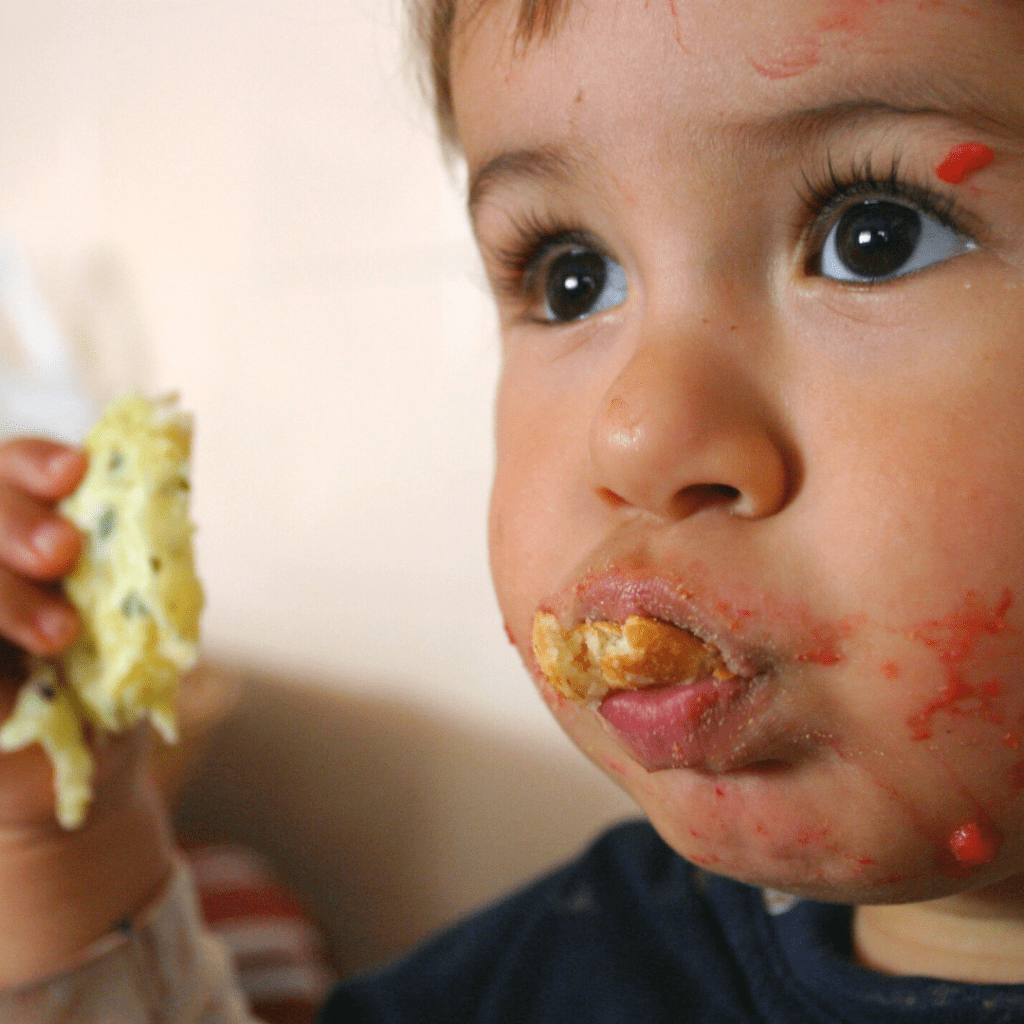
Mouth stuffing refers to the tendency of some babies to put too much food in their mouths at once, which can make it difficult for them to chew and swallow. This can be caused by a lack of self-regulation, experimenting, seeking more sensory input, or just not realizing how much is too much! They’re often still trying to understand where the boundaries of their mouth are and may spit food out during the learning process.
They’re experimenting or having fun
Sometimes, it’s just fun (or funny) to spit out food. Especially if siblings or parents give them a reaction. Furthermore, sometimes babies spit food out – even look at it – and return it back for further chewing!
This might not be them necessarily looking for a reaction – rather – it’s a visual way of learning about what is happening with the food in their mouth. What does it look like now? How much more chewing do I need to do? Babies do weird things. Don’t read into it.
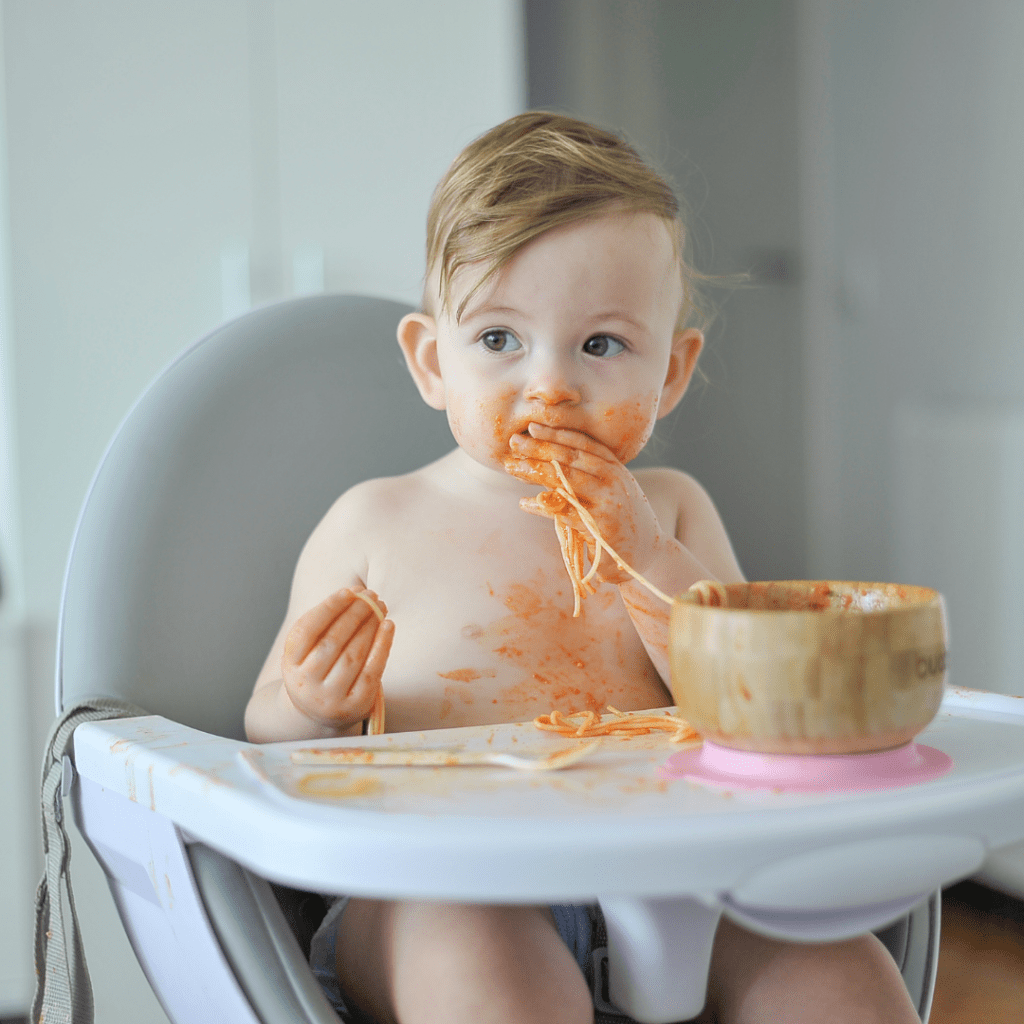
They’re too full
Babies and toddlers need some hunger as internal motivation to chew and swallow food. When they come to the table with little to no appetite, they often do little more than play with, or chew and spit out food. It makes sense that without hunger and a need to satisfy it, there isn’t a drive for them to swallow and ingest food.
Strategies to help your baby chew and swallow better
Offer a variety of textures as early and as often as possible
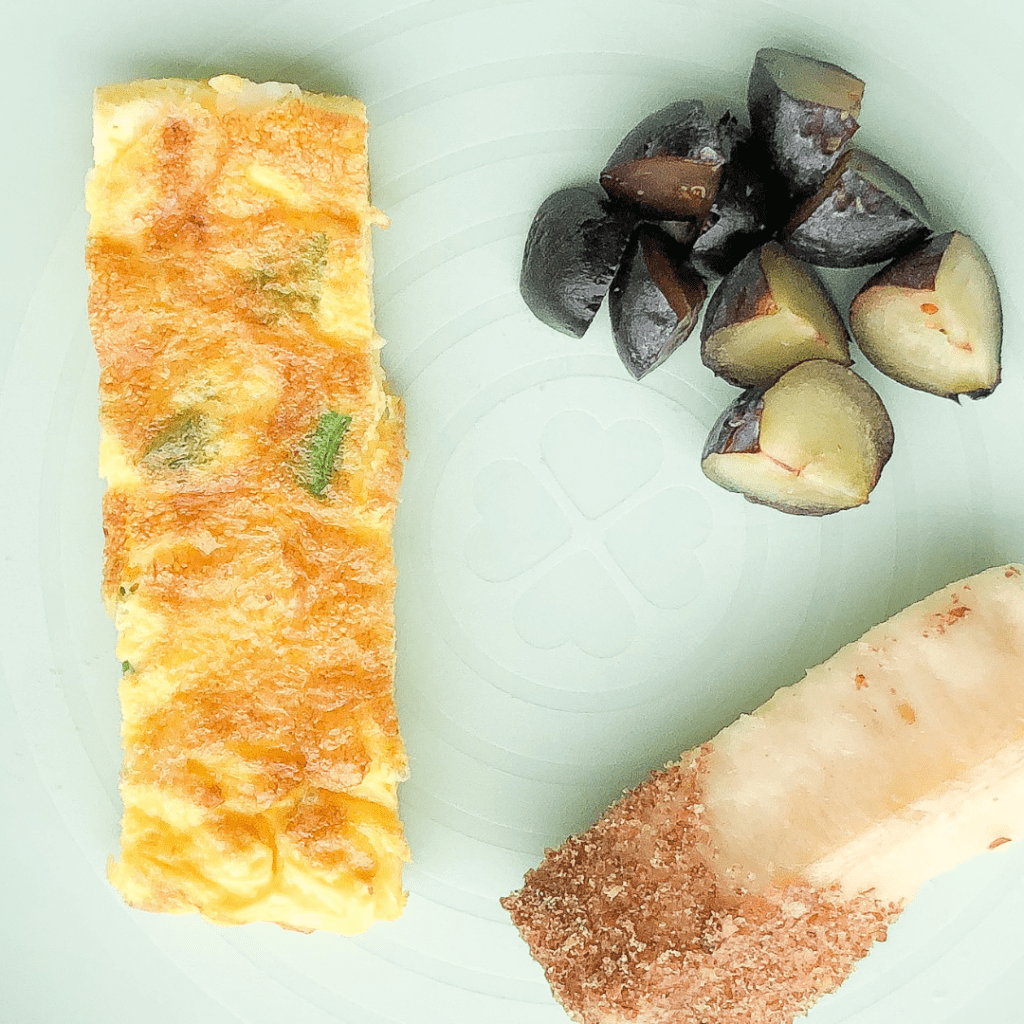
Offering simple purées or very soft finger foods like sweet potato and banana, isn’t going to allow babies to gain all the experience they need with chewing. And waiting a certain amount of time for them to magically have these skills because they’re “old enough” doesn’t just happen (just like waiting for them to magically know how to ride a bike because they turned a certain age…doesn’t happen).
Babies need lots of daily practice on food with lumps, irregular shapes, and more complex, varied textures to be able to learn how to eat them. Textures such as spongy (eg. toast), stringy (eg. pulled chicken), rubbery (eg. mushrooms), and so much more.
In fact, that is what we cover in phase 3 of the Texture Timeline™ – a tool used for parents to ensure they help their baby move from easiest to more advanced textures in a timely way, and to experience the whole gamut of textures out there, so baby can really develop the skills they need. This regular practice over time, on a variety of textures, is what teaches them what to do.
Now, this process does take time – so don’t worry if it’s been weeks and they still don’t know how to do it perfectly. Move in stages, be patient and give your baby time and plenty of opportunity at every meal to develop these skills, knowing it usually takes multiple months of practice before they become efficient eaters.
Model how to chew and swallow to your baby

Have your baby watch and observe you chew and swallow food. This encourages them to imitate the actions you’re doing in front of them. Some tips for modeling and teaching them how to chew include:
- Sit with them facing you and get their attention by calling their name or holding a piece of finger food in their line of sight.
- Bring the finger food or textured purée up to your mouth, open very wide, and place it on the middle of your tongue.
- Move the food over to the side of your mouth with your tongue (displaying tongue lateralization) and make very big, exaggerated chewing movements with your mouth.
- Magnify the “chewing” motion with accompanying hand gestures (open and close your hands to the rhythm of your very exaggerated chewing motions).
- Out loud, you can say “Chew! Chew! Chew!” to provide an auditory cue to help it all sink in. As they learn what to do, eventually you can use this as the sole cue to remind your child to chew, chew, chew their food during meals.
You can cheer them on as a little reward and boost of encouragement when they imitate you. Again, this can take time, so don’t give up after just one or two meals.
Offer a long, resistive whole food or teether
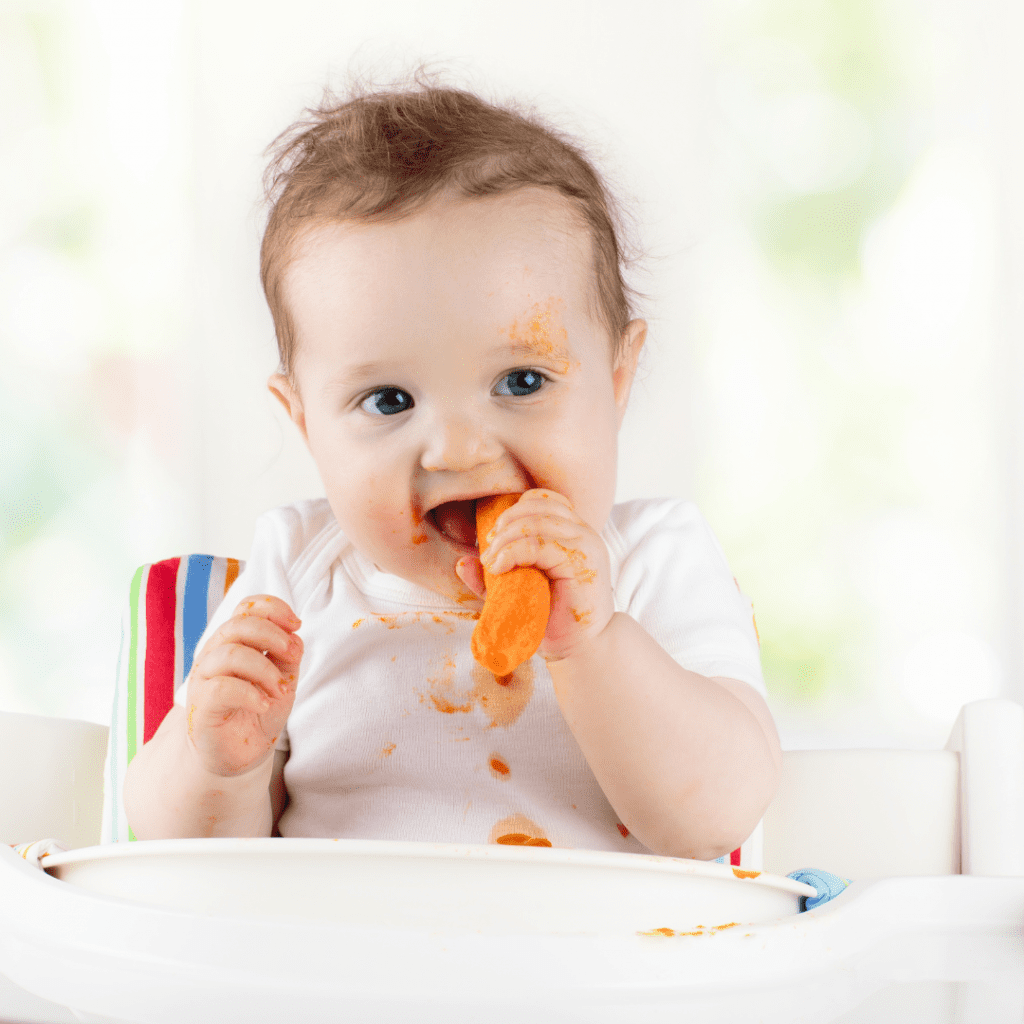
Long, hard, and safe objects like teethers or long, resistive whole foods allow your baby to learn how to chew, with very little to no risk of choking. When long, hard foods are placed over your baby’s molar area, this naturally triggers a reflex to bite down (called the phasic bite). The repeated phasic bite is what leads to chewing!
Allowing your baby or toddler to practice repeatedly biting down on foods or teethers like this will strengthen their jaw, and teach them to chew more instinctively when other foods enter their mouth and are lateralized (moved over by the tongue) to their molar areas.
In fact, these foods also help with the lateralization process, as you can lightly touch one side of your child’s tongue – and then the other – to allow that natural lateralization reflex to occur and be practiced.
Phase 0 of the Texture Timeline™ gives you lots of examples of whole foods that are long and hard/resistive, to practice with! Here are some ideas of Phase 0 foods:
- Chicken drumstick (with the meat removed)
- Spare rib (with most of the meat removed)
- Mango pit
- Raw celery stick (if baby doesn’t have teeth)
- Raw whole carrot (peeled) (if baby doesn’t have teeth)
There are many more ideas found inside the Texture Timeline™ lesson of the Baby Led Feeding course! You can also get a starter version of the Texture Timeline™ guide for free, in this workshop on moving from purées to finger foods without fear.

Don’t offer a back up food
Teach them that it’s ok to not like a food upon first trying it (or even after 10 times of trying it). This is normal as they learn about so many new foods and flavors. Luckily, milk meets caloric requirements while babies are learning how to eat solids, and this is a short lived issue if you let it play out. When a back up food is offered instead, it teaches babies (and especially toddlers who are entering a picky eating phase), that they don’t have to try again (or try hard) to learn how to chew or like a food. This is how it becomes a behavioral issue.
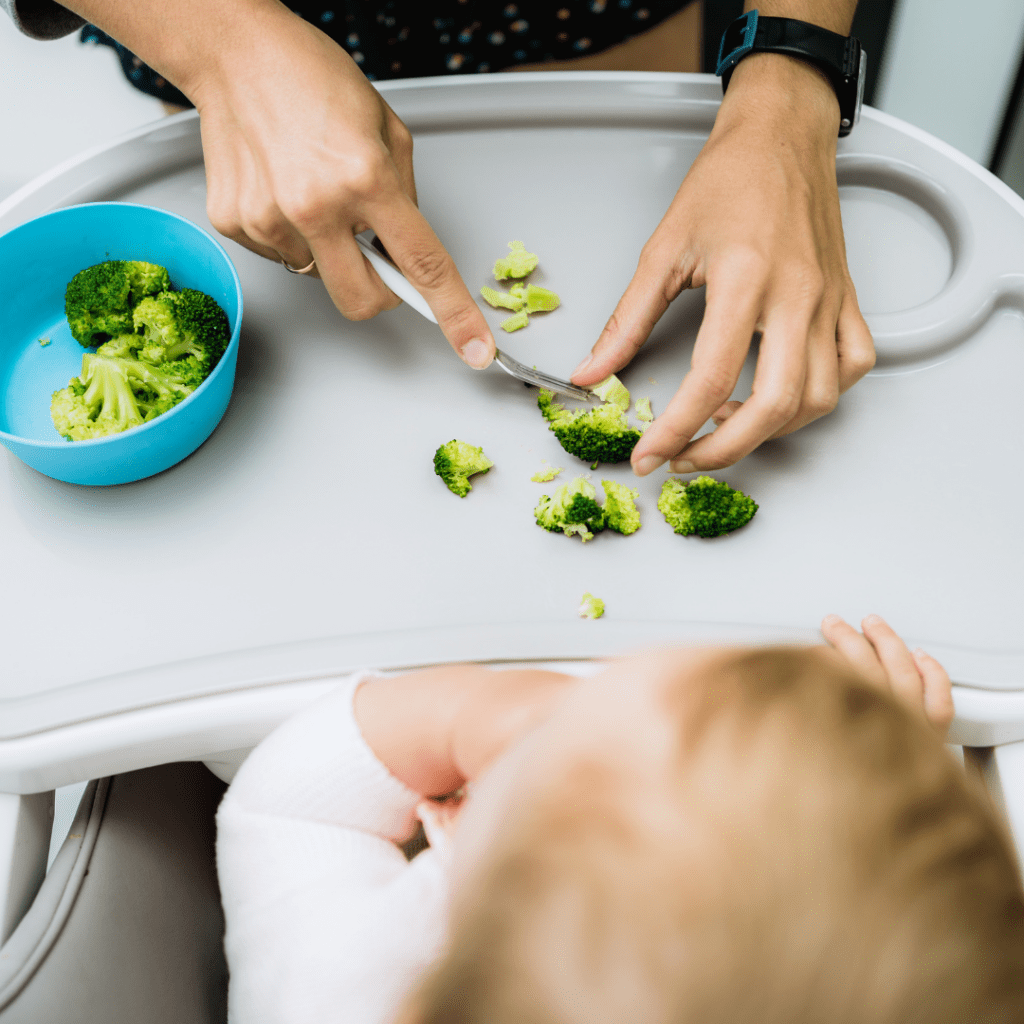
In the future, you can modify meals to always include a “safe” food. This is something you know they can reasonably eat if they’re actually hungry, so they won’t starve, whenever this new or previously refused food is re-offered. This keeps them exposed to the food, without giving the message that a backup will be provided or as a reaction to them not eating the first food option.
When milk is offered to your baby, make sure it’s no sooner than 30 minutes after the skipped or refused meal, so that it’s also not associated with being a backup offer. Then just try again at the next solid food meal (or later in the week if you’d rather spread it out)!
Implement a feeding schedule
For toddlers, it’s especially important to have a set feeding schedule. It’s all too common for milk or snacking to fill them up between meals. Babies also have to be motivated to chew and swallow with a decent appetite. Play around with the timing of your baby’s milk and solids feeding schedule to ensure they come to the table hungry (but not hangry).

When to seek help with how your baby is eating solids
If your baby is over 9 months of age and has been practicing eating finger foods for more than 2-3 months with no improved success, seek help from a feeding therapist (registered dietitian or speech language pathologist). Sometimes one-on-one help may be required, or a further look into potential medical or structural issues that may be making it harder for your baby.
Ready to start solids and safely feed from 6-12 months? See our Baby Led Feeding course below.
Find this helpful? Pin it to save for later!
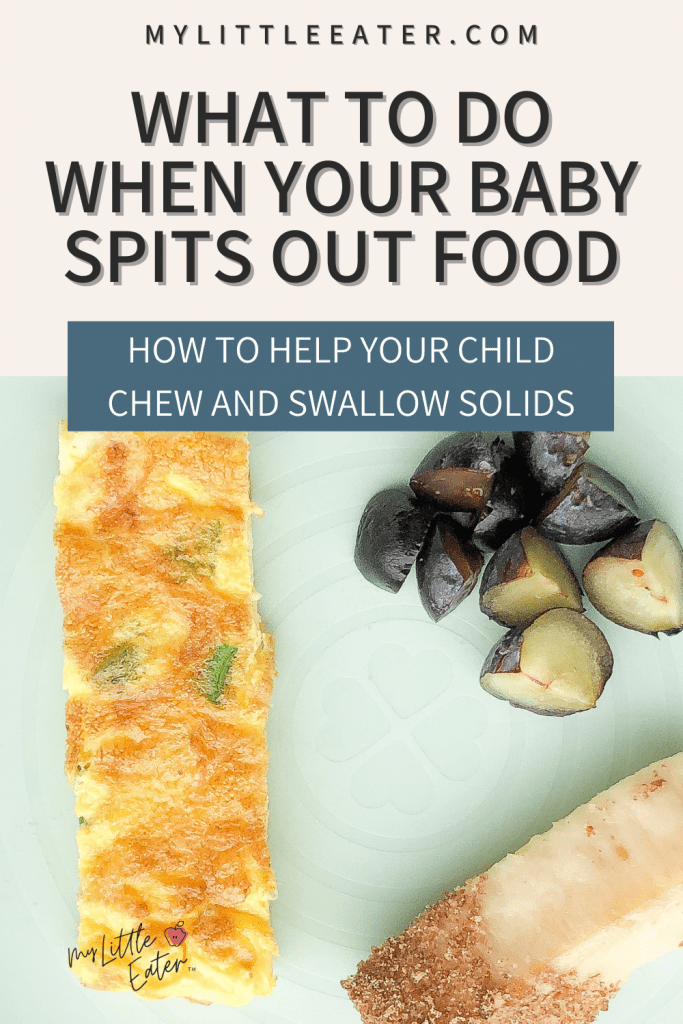

ABOUT THE AUTHOR
EDWENA KENNEDY, RD
Founder and lead Registered Pediatric Dietitian at My Little Eater Inc., creator of The Texture Timeline™, and mom of two picky-turned-adventurous eaters.
